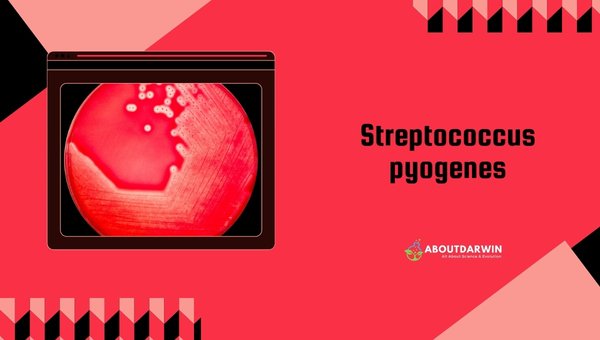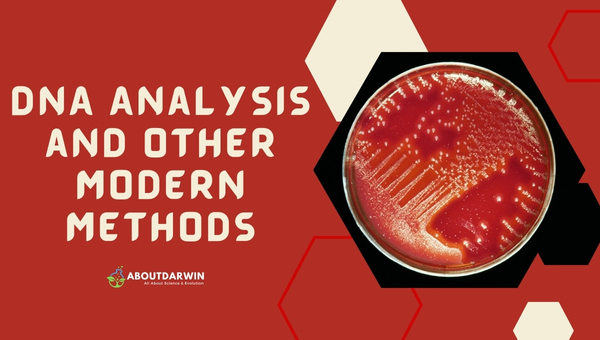Physical Address
304 North Cardinal St.
Dorchester Center, MA 02124
When I think about some of the most common bacterial infections people face, Streptococcus pyogenes comes to mind. Also known as Group A Streptococcus (GAS), this bacterium is known to cause extensive illnesses, ranging from minor skin and throat infections to severe diseases like rheumatic fever and necrotizing fasciitis.
I want to guide you today on a little scientific journey where we’ll explore more about this fascinating (and, at times, scary) bacterium. We’ll look into the impact it has globally, the diseases it can cause, and, more importantly – how we identify it using biochemical tests.
Contents
In the curious world of bacteriology, biochemical tests are designed to exploit biochemical differences between bacteria right down to the species level. For example:

| Basic Characteristics | Characteristics (Streptococcus pyogenes) |
|---|---|
| OF (Oxidative-Fermentative) | Facultative Anaerobes |
| Catalase | Negative (-ve) |
| Urease | Negative (-ve) |
| Hemolysis | Beta Hemolytic |
| VP (Voges Proskauer) | Negative (-ve) |
| Motility | Non-Motile |
| Shape | Cocci |
| Gram Staining | Gram Positive (+ve) |
| CAMP | Negative (-ve) |
| Spore | Non-Sporing |
| Capsule | Capsulated |
| 6.5% NaCl Growth | Negative (-ve) |
| PYR | Positive (+ve) |
| Fermentation of Adonitol | Negative (-ve) |
| Fermentation of Arabinose | Negative (-ve) |
| Fermentation of Arabitol | Negative (-ve) |
| Fermentation of Cellobiose | Variable |
| Fermentation of Dulcitol | Negative (-ve) |
| Fermentation of Erythritol | Negative (-ve) |
| Fermentation of Fructose | Positive (+ve) |
| Fermentation of Galactose | Positive (+ve) |
| Fermentation of Glucose | Positive (+ve) |
| Fermentation of Glycerol | Variable |
| Fermentation of Glycogen | Variable |
| Fermentation of Hippurate | Negative (-ve) |
| Fermentation of Lactose | Positive (+ve) |
| Fermentation of Maltose | Positive (+ve) |
| Fermentation of Mannitol | Negative (-ve) |
| Fermentation of Melibiose | Negative (-ve) |
Streptococcus pyogenes is a term that may not be familiar to most of you; however, its common name might ring a bell – Group A Streptococcus (GAS). It’s a type of bacterium that is known to cause a wide range of infections in humans.
This transparent bacterial species falls under the category of gram-positive bacteria, bearing a rounded shape and arranging itself in chains or pairs. Although it’s microscopic, Streptococcus pyogenes has colossal implications healthwise.
Commonly residing on our skin or in our throat, it’s generally harmless until it finds an opportunity to invade the body’s deeper tissues, where it can cause serious disease. From here stems their part in many unpleasant memories from childhood when we suffered from infections such as tonsillitis or impetigo, which this tricky bacterium often triggers.
Also Read: A Close Look at Mold and Yeast: Deciphering the Differences
Streptococcus pyogenes, commonly known as Group A strep, is a notorious bacterium that has made a significant impact worldwide. Renowned for its virulence, it’s responsible for a multitude of diseases affecting millions globally every year.
From my experience in public health, Streptococcus pyogenes is one bacterium you should never underestimate. Its ubiquity and prevalence make it a substantial concern for public health systems globally. You see, this bacteria isn’t geographically constrained – it can critically affect folks anywhere, be it North America, Asia, or Africa.
What alarms me more is the sheer number of infections each year – we’re talking hundreds of millions. Group A strep causes non-invasive infections like pharyngitis (strep throat), skin infections such as impetigo and cellulitis, and even invasive diseases like necrotizing fasciitis (flesh-eating disease).
Moreover, nasty complications like rheumatic fever and post-streptococcal glomerulonephritis may follow if the infection isn’t addressed promptly. The healthcare expenditures to deal with all these issues are gargantuan!
We mustn’t forget about days missed from work or school due to its infectious nature either. So you see why I say that understanding Streptococcus pyogenes is absolutely vital for our well-being.
Some tests are listed below:
Streptococcus Pyogenes is identified by its unique characteristics, including beta-hemolytic activity on blood agar plates, sensitivity to bacitracin, and the presence of Lancefield group A carbohydrate on its cell wall. Understanding these traits is essential for accurate diagnosis and appropriate treatment.
In my experience, identifying Streptococcus pyogenes starts with noting its key morphological features and the physical characteristics that set it apart. This bacterium is a coccus – that’s a scientific way of saying it’s round.
But these aren’t solitary creatures; they come arranged in long chains that can be observed under the microscope. Thanks to Gram staining, another typical practice done in labs everywhere, Streptococcus pyogenes shows up purple – a true “Gram-positive” bacterium.
But here’s where things get absolutely fascinating for me. The working landscape for this bacterium is blood agar plates, where they grow and thrive.
Trust me when I say that what happens next is pure biochemical drama—Streptococcus pyogenes produces hemolysins, toxins that break down red blood cells, leading to their destruction or ‘hemolysis.’
This bacterium extends its dominance by displaying clear zones around colonies as red blood cells are lysed entirely—an action we pros call Beta-hemolysis.
So yes — understanding these morphological and hemolytic properties not only helps us identify Streptococcus pyogenes but also adds heaps of style points to the entire bacterial world!
Also Read: Haemolysis in Streptococci: Types and Health Impact
Identification of different variants within this family, such as Streptococcus pneumoniae, Streptococcus pyogenes, and other related species, is critical in clinical settings for effective treatment.
It involves a combination of biochemical tests, serological typing, and molecular methods to distinguish between the various streptococcal species.
Remember, these are just some of the many ways that scientists work out what they’re dealing with when it comes to classifying Streptococcus pyogenes and other bacterial strains. Like detectives solving a mystery, each clue narrows down possibilities till we get our culprit!
Modern science has blessed us with some incredibly advanced techniques, like DNA Analysis and Next Generation Sequencing, that have revolutionized the way I identify bacteria such as Streptococcus pyogenes.

With DNA analysis, I can understand the intrinsic genetic makeup of these organisms. This not only helps me confirm their identity but also equips me with an understanding of potential resistance patterns, which informs effective treatment decisions.
Next Generation Sequencing raises this bar even further by sequencing millions of small fragments of DNA simultaneously.
When it comes to our culprit, Streptococcus pyogenes, this technological marvel offers me insight into its evolution and pattern of spread in a community or geographical region.
By comparing different strains at the genomic level, I gain intelligent insight into how they are related and how they have evolved or adapted over time.
In essence, these modern methods go beyond just identifying Streptococcus pyogenes; they provide a holistic picture that includes everything from its lineage to its probable future movements – all contributing to more effective disease control strategies.
Also Read: Antigens: Key Properties, Types, and Antigenicity Factors
Streptococcus Pyogenes predominantly causes common illnesses such as strep throat and skin infections like impetigo, but it can also lead to severe diseases, including toxic shock syndrome and rheumatic fever.
Biochemical tests work by reacting with specific enzymes or metabolic characteristics of Streptococcus pyogenes, allowing for its identification.
Its resilient nature and ability to survive in the throat or on the skin’s surface enable easy transfer through close contact or droplets from coughs or sneezes.
Some people may be more susceptible because of weaker immune responses; others may carry this bacterium without symptoms, silent carriers who unwittingly spread it.
Serotyping, particularly Lancefield grouping based on their cell wall carbohydrate composition—plays a pivotal role in differentiating between various members within the ‘strepcoccaceae’ family.
In the end, it’s fascinating to unravel the mysteries of Streptococcus pyogenes – a bacterium that packs quite a punch. Biochemical tests play a pivotal role in the identification and understanding of its behavior, helping researchers take significant strides in combating diseases this bacterium causes.
Moreover, the constant evolution of these bacteria makes it essential to keep discovering new methods for their detection and control. As they say, ‘knowledge is power’; I indeed hope that we keep empowered in our ongoing tussle with these microscopic yet influential organisms!